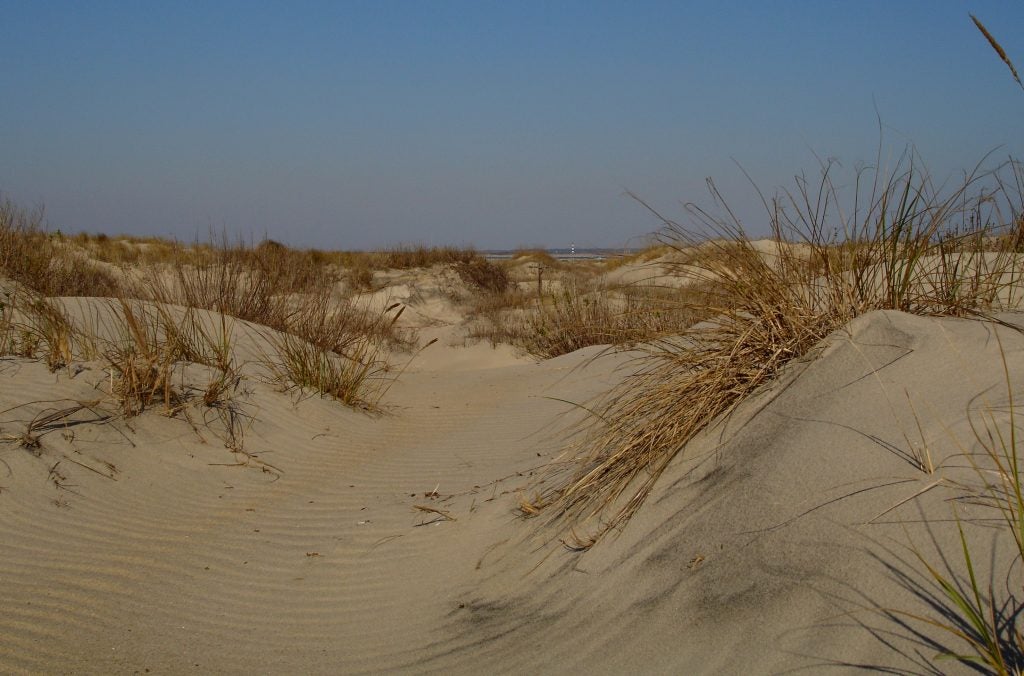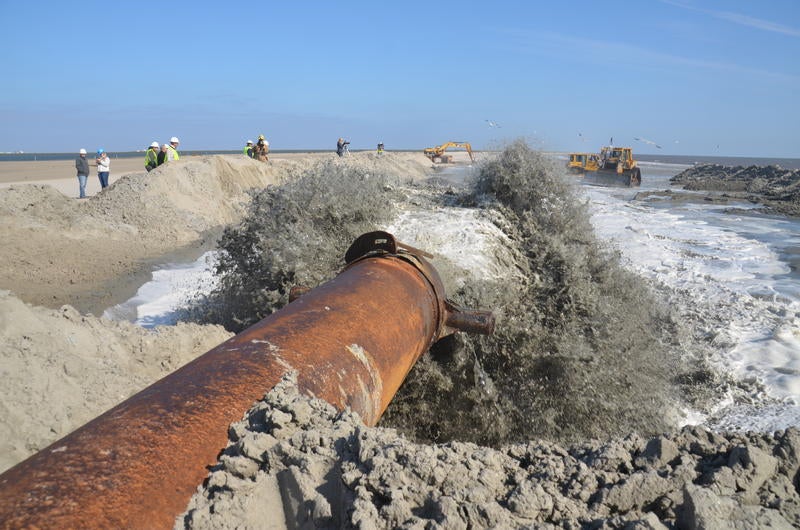Florida and North Carolina are once again recovering from hurricanes – this time, from two of the largest storms to hit our coasts in a century. In a climate-driven world, an important aspect of recovery is rebuilding in ways that make communities safer and more resilient to storms.
One strategy for reducing future flood risks is restoring natural features such as barrier islands, dunes, wetlands and floodplains. These natural infrastructure solutions help slow storm surge and hold flood waters, reducing the devastating impacts of storms.

Even where a dune was completely lost during a storm, it did its job. A dune’s job is to be a chew toy for waves, so that roads and houses aren’t being chewed on. (Photo Credit)
Yet, despite what we know about the effectiveness of these features, natural infrastructure is still an underutilized resilience strategy.
While there is broad agreement that natural infrastructure can be an effective, sustainable means to reduce flood damages, existing information gaps make it difficult for city planners, engineers and decision-makers to fully support these practices. The good news is there is work already underway to help fill these gaps and make natural infrastructure solutions more accessible.
It’s not a question of why, but how
To help address gaps, the U.S. Army Corps of Engineers convened a group of international experts – including myself and others from EDF – to develop guidelines on how to plan, design and assess natural infrastructure projects to reduce flooding impacts and improve environmental quality.
These guidelines, developed by engineers, scientists and economists from multiple nations, will span a variety of topics, including river flooding, storm water management and shoreline erosion. The guidelines will stress strategic planning and adaptive management, to yield multi-objective, multi-partnered projects that can be more rapidly implemented. Once we start to accelerate the use of natural infrastructure solutions, vulnerable communities worldwide will be better equipped to weather increasingly extreme storms and flooding. Share on X
As a result, by 2020, planning and design professionals across the globe will have world-class principles and procedures that should dramatically accelerate implementation of natural infrastructure projects to reduce flood damages and help communities adapt to changing climatic conditions.
Need for improved policies
To further accelerate the use of natural infrastructure, we also need to close the governance gap. Thankfully, there are new policies helping us get where we need to be.
America’s Water Infrastructure Act, signed into law last month, encourages the use of natural and green infrastructure for flood risk management and storm damage risk reduction. Another example is a recent Army Corps memo that specifically calls out incorporation of natural infrastructure options as a desired innovation for inclusion in projects funded in the Hurricane Harvey supplemental.

Sediment pours out of a pipeline as part of Louisiana’s Caminada Headland restoration project near Port Fourchon. (Photo Credit: CPRA)
Despite these strides, we still need additional measures.
Environment and resource agencies need to incorporate current and future climate conditions, such as increased precipitation, sea level rise and habitat shifts, into their permitting review decision processes. Permitting entities also should take a harder look at how to implement natural infrastructure restoration projects more quickly and for less money, to help get these projects and their habitat improvement and risk-reduction benefits on the ground sooner.
Using innovative funding mechanisms
To help finance natural infrastructure projects, communities need to look for unique, cost-effective solutions that bring private financing to public projects.
In Louisiana, environmental impact bonds have the potential to help the state fund wetland restoration projects sooner while also inviting beneficiaries of these projects in to implement them. If used in the right way, this form of pay-for-success financing can help communities fund natural infrastructure projects and create more resilient coastal systems.
Once we start to close these gaps and accelerate the use of natural infrastructure solutions, vulnerable communities worldwide will be better equipped to weather increasingly extreme storms and flooding. We’re off to a good start, but we’ve still got a ways to go.









